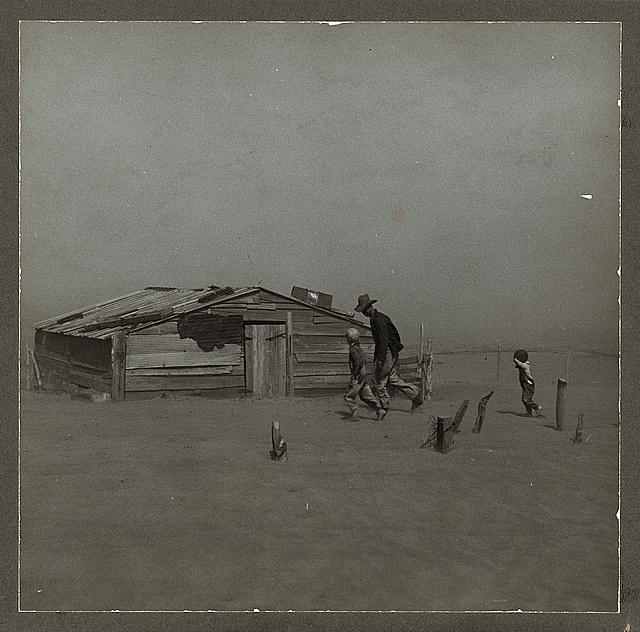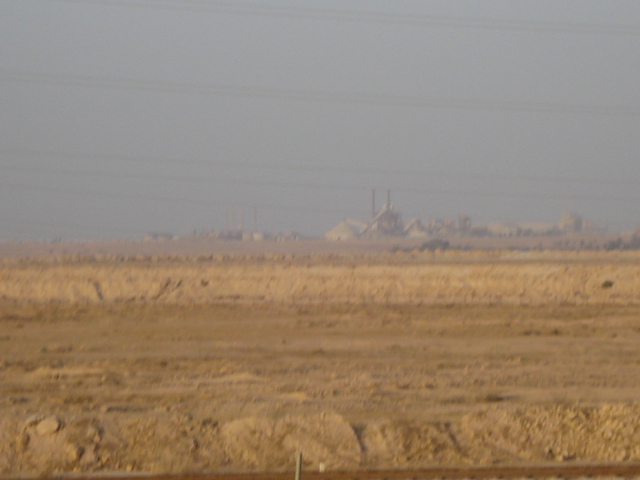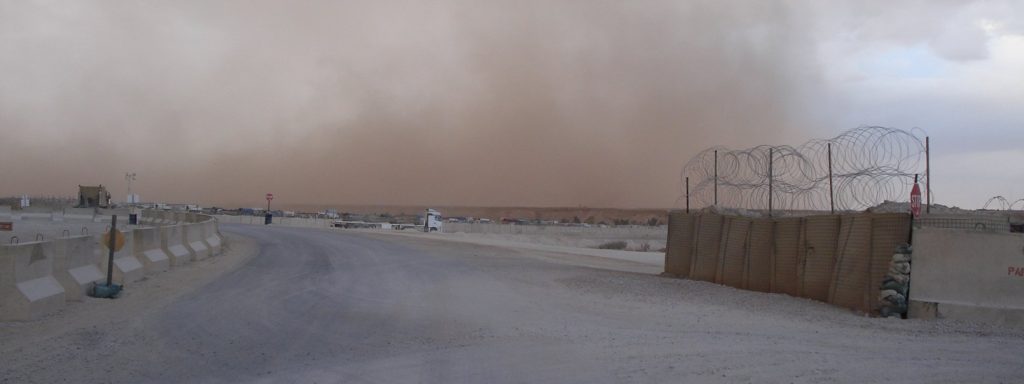I just finished The Worst Hard Time about the dust bowl of the 1930s. Some of what the author describes applies to Iraq. We get the various different colors of dust and it is almost impossible to get away from it.
Below is the American dust bowl.

The dust bowl was a man-made disaster caused by the plowing up of prairie grass as farmers tried to produce crops which were not suited by nature to the area. This process was exacerbated by “good luck”. There was a boom in grain prices caused by WWI and the collapse of grain production in Russia (which had been a big exporter) after the revolution there. This coincided with some unusually wet weather on the American high plains and during the 1920s times were good, with bumper harvests and high prices. But later as grain prices dropped (i.e. returned to long term normal), farmers had to put more and more land in production merely to make the same money. It became a viscous (BTW the original idiom is indeed a viscous not vicious) circle with farmers breaking up the sod to grow more grain and growing more lower the prices and encouraging more sod-busting. Then the rains stopped. Subsequent investigation showed that the drought of the dust bowl was not abnormal, but w/o the grass to hold the soil, it blew away.
There is a good PBS series on the Dust Bowl, BTW with a good webpage.
We learned a lot from this experience. We now have methods that can build or at least maintain soils. The most important lesson is that you have to work within the bounds of nature and there are some things you just cannot do, no matter how attractive or how much you want it. The Great Plains have recovered (mostly) from the dust bowl. Farming there is dry land or irrigated, usually with water from the Ogallala Aquifer, but much has reverted to grassland and many rural counties have never recovered their populations.

Iraq has a climate like the Texas Panhandle, only hotter. Anbar gets 4-7 inches of rain in a usual year. Most of that rain falls in winter. I saw a couple of good storms and once it rained all day, but the place is a desert. I wonder, however, how much of desolation is man-made. The dunes in Anbar are dust and dirt, not sand. Plants can grow on dirt, if they have a chance. Unfortunately, people and goats have been working on this place for 4000 years. It would never be verdant, but how much could be restored? We have planned and funded some small scale restoration projects. I don’t know if they will last very long. Local shepherds have incentives to let their animals devour what they can get, even if it means destruction in coming years.
I had some grandiose dreams when I came to Anbar. I envisioned a small version of the CCC, an ink blot version. We have had lots of contacts with local farmers but I don’t know if we have done any lasting good. The desert will probably swallow up all we do. Ozymandias leaps to mind.

Above is the Al Asad dust bowl with the duster blowing in
Probably the best thing I did for environment of the desolate region was negative. We declined to fund “emergency feeding” for the local sheep and goats. It seemed cruel, but it really would not have helped even in the short run and it would have caused must more destruction and despair even in the medium term. There are just too many of them for the carrying capacity of the land. They destroy everything green. My Ag-Advisor Dennis, who did a lot of his work and growing up in Texas near the old dust bowl, understood the futility – even perniciousness – of the subsidies. It needed NOT be done. I agreed with him 100%. We took the hard decision and I am proud of it, although I told him that if they ever make a movie about this, we will certainly be the villains. Sheep and goats are desert making machines, but they are cute.
Anyway, I recommend the book. About the same time you should also read The Forgotten Man, also about the Great Depression but with a broader perspective.
